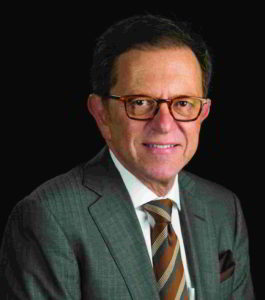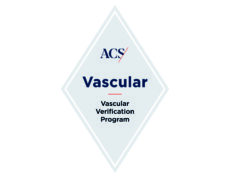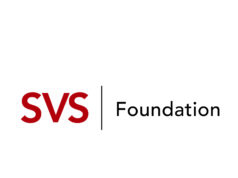
This marks my last editorial as medical editor of Vascular Specialist. It has been more than a privilege to have been offered this position. After all, how lucky am I to be provided with an opportunity to rant about things that annoy me or laugh in print at some of the absurdities of our professional life.
Before I put down my pen, or should I more correctly say close my word processor, I would like to add an epithet that I have yet to coin publicly. I am suggesting that we lay to rest the term “Endoleak” and replace it with “Endofill.”
At the outset, I must commend doctors White, Yu, and May for recognizing and publicizing this important potential complication of aortic endografts (White GH, Yu W, May J., J Endovasc Surg. 1996.3:124-5). However, the term “Endoleak,” which they used to describe the continuation of free-flowing blood within the aneurysm sac, has created confusion amongst nonvascular surgeons and the lay public. Often such misunderstanding has resulted in deleterious consequences. I’m sure many vascular surgeons have been summoned to the emergency room after an emergency physician incorrectly interpreted a radiologist’s report of an Endoleak as a life-threatening rupture. Others may have had to explain to a referring physician that an Endoleak does not imply the vascular surgeon had performed an inadequate procedure. Further, patients have absolutely no concept of the meaning of this term and are often frightened when they learn they have an Endoleak. So prior to consenting them for an endograft, I always bring out a plastic model of an aneurysm with an endograft in place and go through a time-consuming explanation. Seldom do they remember this account. When I see patients back who have an Endoleak, I once again find myself placating terrified individuals who think they are about to die.
So that is why we should replace the alarming “Endoleak” with the less disturbing and more descriptive “Endofill.” After all, there is no “leak” but rather a “filling” of the sac with blood. Certainly, a Type 1 “Endofill” is still dangerous, but I doubt the uninitiated would consider it an immediate problem. “Endofill” may still take some explaining, but it is less likely to cause patient anxiety or an overzealous panic in a referring physician.
Let’s face it. Even the term “leak” has led to many errors in the treatment of patients with an abdominal aortic aneurysm. For example, it is not unusual that an emergency room physician, hospitalist, or internist will triage a “leaking” aneurysm as nonurgent because it has not “ruptured.”
I think we should ban “leaking” and “leak” from the medical vernacular. Let Washington politicians use the words. Rather, vascular surgeons and radiologists should describe exactly what is happening when a limited amount of blood escapes the wall of an aneurysm by using the term “contained rupture.” I’m sure that will get the nonvascular surgeon’s attention!
I’m hopeful that you will also remember some of my other epithets and aphorisms from columns. Such as “Vascular surgeons Operate, Medicate and Dilate,” that TLR (Target Lesion Revascularization) should really be “The Least Relevant.” That a nervous surgeon will not be proficient so “The most important heart in the Operating room is the surgeon’s.” That vascular surgeons are all “Knights of the rectangular table,” and that rapacious doctors are committing “White Coat Crime.” That atheroembolism to the buttocks should be called “Trash Can.” That we should always ask for long-term outcomes before accepting new technologies otherwise, we would be encouraging “Premature congratulation.” That Societies that refuse to rein in their members by refusing to use the word “inappropriate” are being “Anti-semantic.” Further, that shared decision making is essential but that “Insecurity is the price patients must pay for sharing in the decision-making process.” And, of course, my request that we all join the SOS, the “Save Our Saphenous” society.
I am also hopeful that, with time, my exhortations will aid Vascular Surgery in getting the recognition that it deserves. I have suggested many ways we can expedite this goal including possibly changing the name of the Society to The American College of Vascular Surgery and offering members the opportunity to refer to themselves as Fellows of that College. I have encouraged all who are trying to achieve a separate Residency Review Committee, and I fully support an independent American Board of Vascular Surgery.
Over the last 5 years, I have penned almost all that I believe needs to be said about vascular surgery, vascular surgeons, our patients, and the Society for Vascular Surgery. However, although my contract still allows one more year as medical editor, I felt it was time for new insights from a new generation of surgeons.
It is with great pleasure, therefore, that I pass the reins to Malachi Sheahan III, MD. Vascular Specialist has become the primary news source for our Society, and its educational articles and news items offer learning experiences not found in peer-reviewed journals. I encourage all to submit interesting news items for print, add some unusual Tips and Tricks, write letters to the editor, and tell us about your accomplishments inside and out of vascular surgery.
Please also volunteer to write Point/Counter Point articles. Vascular Specialist is your resource, and it’s not only in print but also in all forms of electronic and social media. It is up to you to make sure that it continues to thrive as a valuable resource for all our members.
I want to publicly thank the Associate Editors for their many contributions. This magazine would not be the same without their insightful comments. However, in the background is the actual “hero,” Mark Lesney. Mark has been the editor who sends Mal and me news items to review, urges us to be punctual, and is responsible for putting Vascular Specialist together. He works tirelessly under the pressure of producing a monthly periodical. Vascular Specialist is indebted to his efforts.
Finally, I want to thank you all so much for bearing with my rantings these last few years. Your letters and emails of appreciation have been an inspiration.












